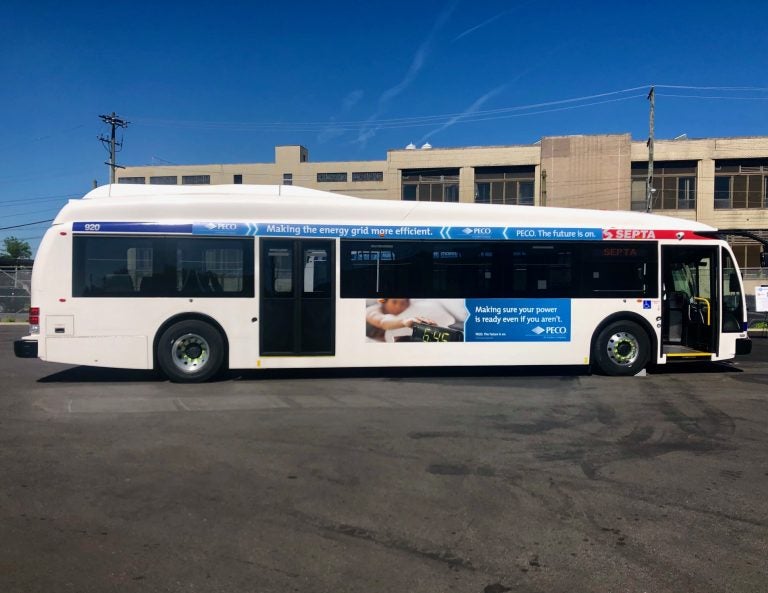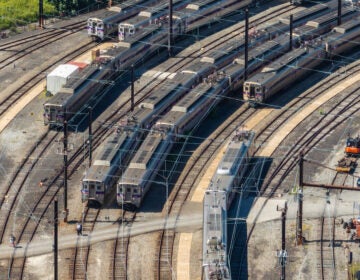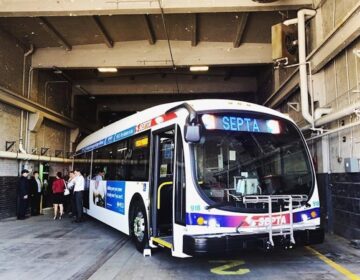SEPTA: Fuel costs are down thanks to hybrid buses
The continued push to expand its low-emissions fleet helped SEPTA save about $300,000 in fuel costs.

One of SEPTA's electric buses. (Darryl Murphy/WHYY)
SEPTA says its push for sustainability is paying off.
So far, diesel-electric hybrid buses make up about 90% of the 1,400 buses in SEPTA’s fleet, according to the authority. Plus, SEPTA added 25 electric buses this year, with 10 more expected in 2020.
The continued push to expand its low-emissions fleet helped SEPTA save about $300,000 in fuel costs. That plus $1.7 million in total operating budget savings during the first two months of this fiscal year adds up to a total operating surplus of $200,000.
Deputy general manager Richard Burnfield said the surplus bodes well for the 2020 fiscal year, which begins on Oct. 1.
“We live within our budget,” he said. “No matter what, we carefully manage our resources throughout the year, day to day, week to week, as we look at both the revenue side and the expense side. So it’s a favorable start to the new fiscal year.”
More than $1.1 million of the $1.7 million in operating budget savings came from reductions in medical and prescription expenses for SEPTA employees.
And even with those cost-saving measures, SEPTA’s budget success barely eclipsed losses in ridership revenue, which was down by $1.5 million.
Regional rail numbers were “strong,” Burnfield said. The loss was primarily from city transit.
Burnfield said Fourth of July and a later school year impacted revenue.
Last year, the School District of Philadelphia started the school year before Labor Day, resulting in $750,000 in student pass sales. And since Fourth of July fell on a Thursday, many potential riders opted for a four-day weekend.
“People notably take Thursday and Friday off,” Burnfield said. “They may change their purchasing habits for that week. So, I think that does have an impact on our revenue for the month.”
SEPTA’s ridership numbers have been struggling since FY2012, with a deep decline after FY2016. Since FY2012, annual ridership numbers fell from 339 million trips to 293 million trips.
Fiscal year 2019 ended with a 3% total ridership decrease from the previous year. “Competitive factors” such as ride-hailing services, bike-sharing, and changes in rider patterns were to blame.
SEPTA hopes its planned redesign of its bus network will help turn things around.
WHYY is your source for fact-based, in-depth journalism and information. As a nonprofit organization, we rely on financial support from readers like you. Please give today.






